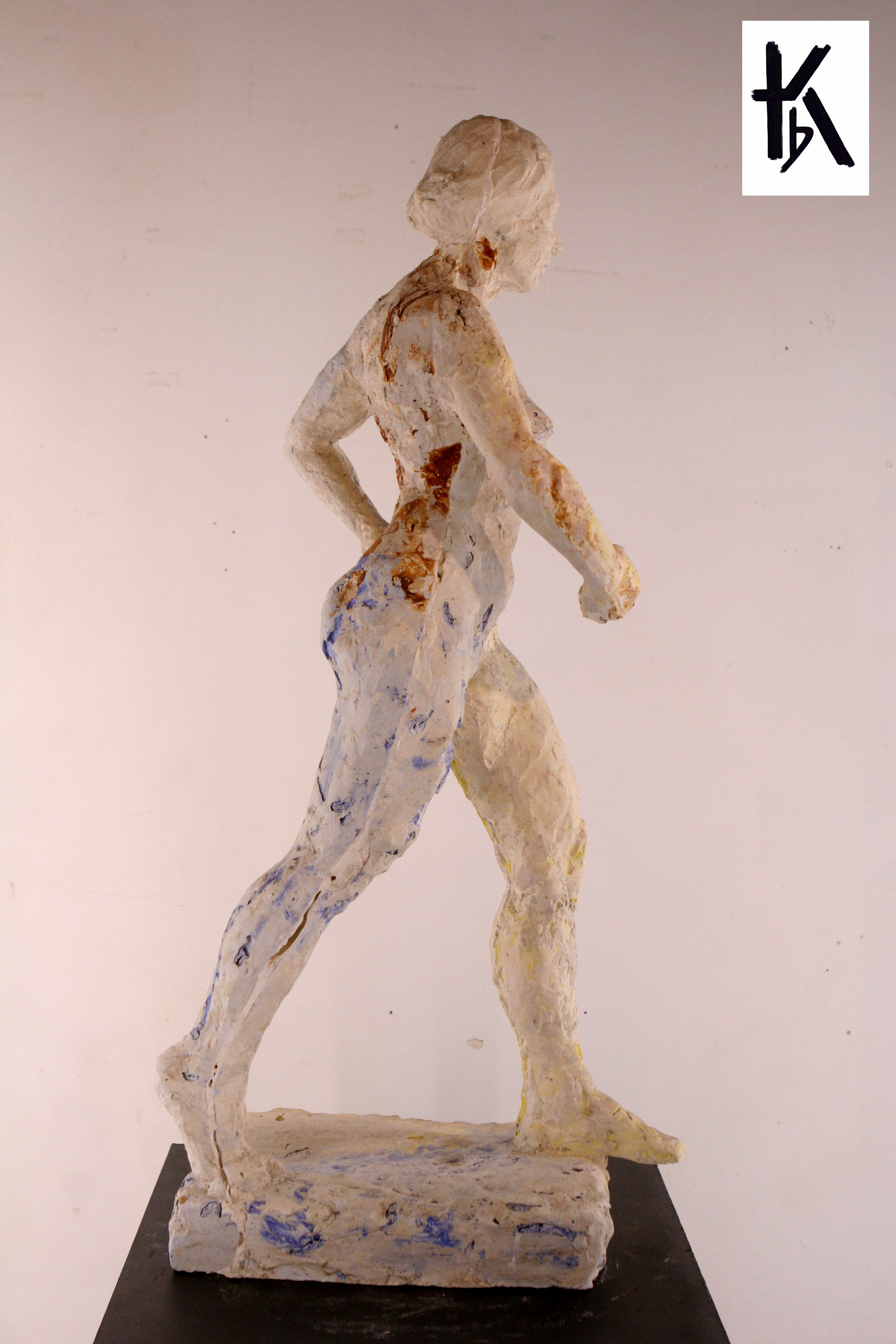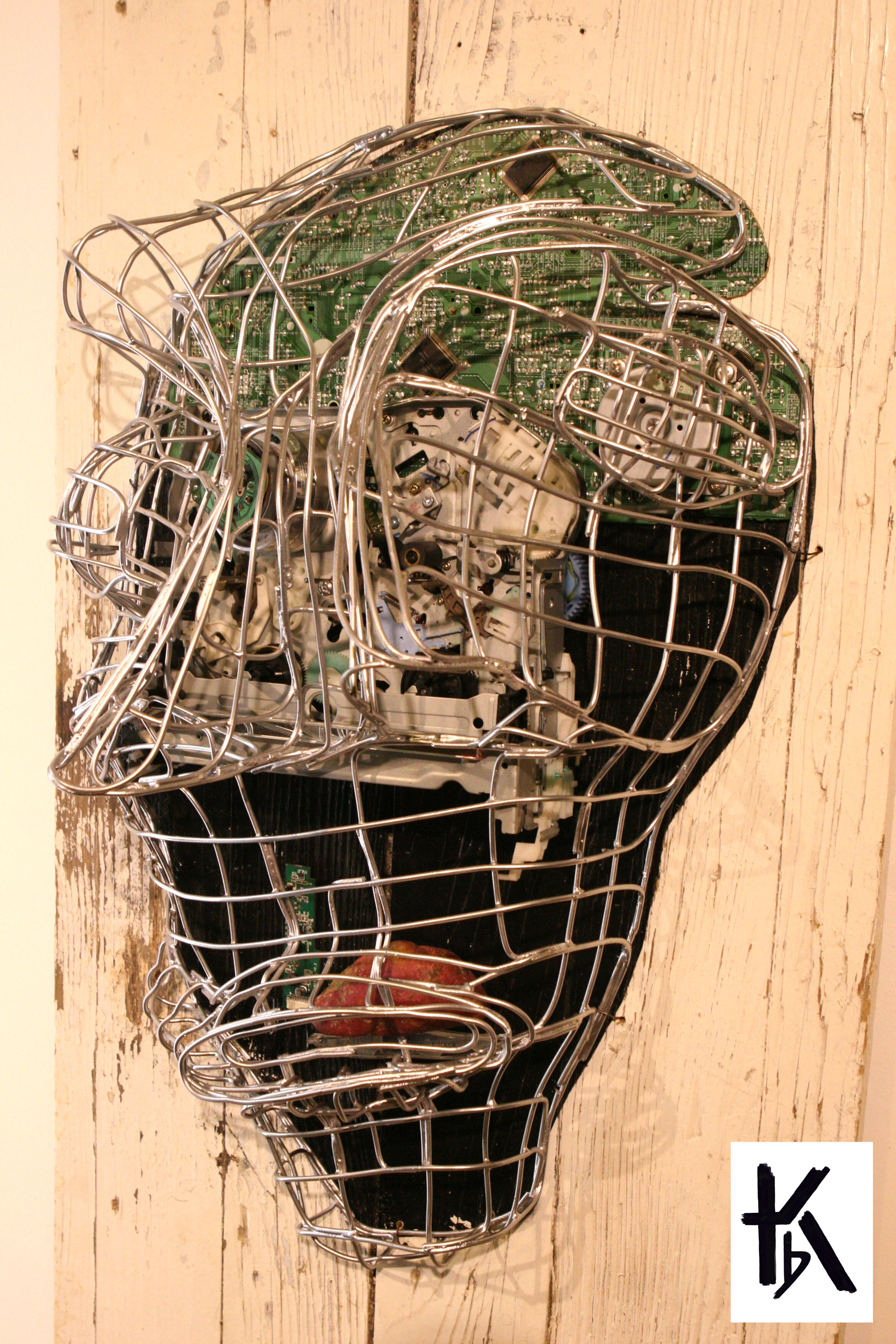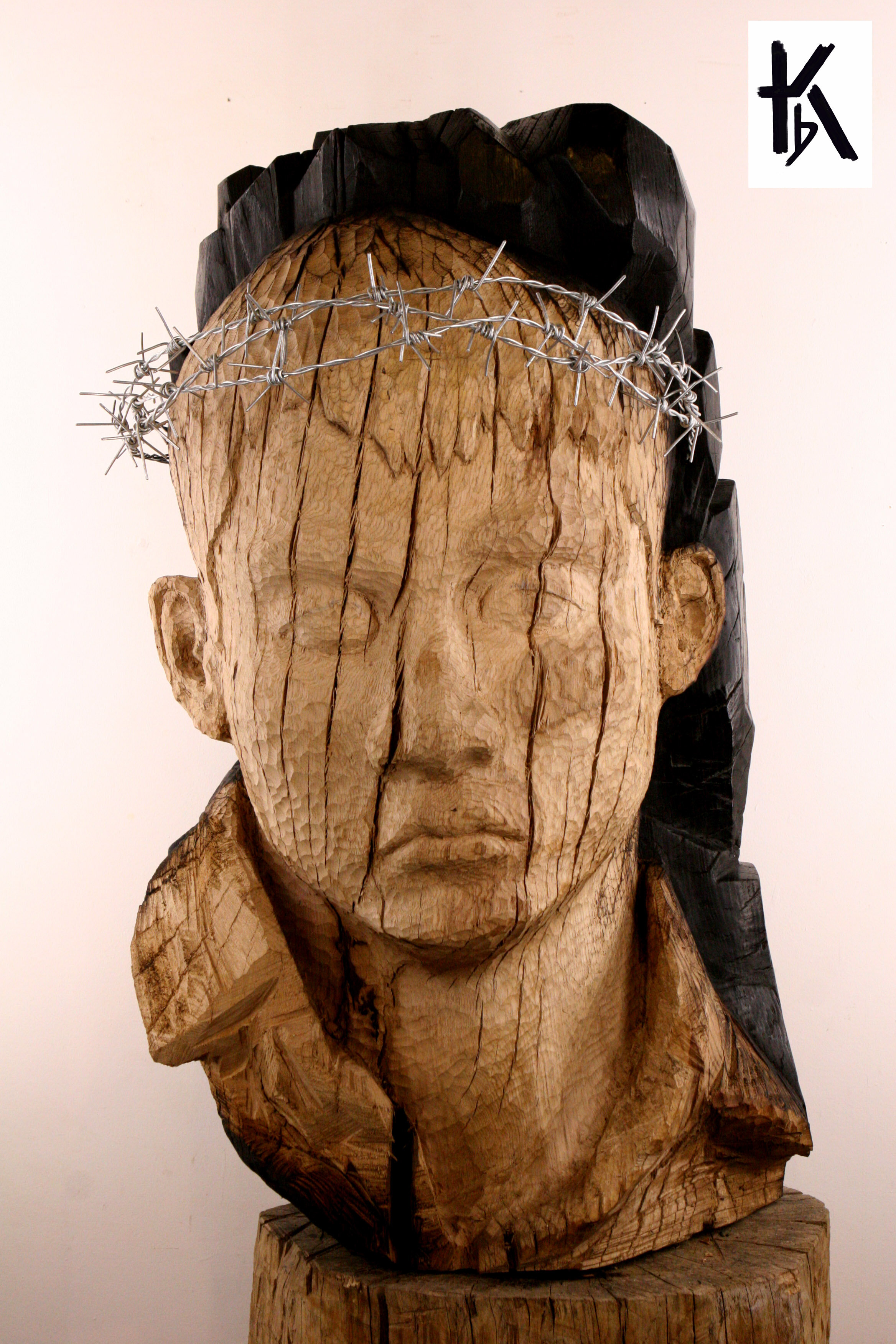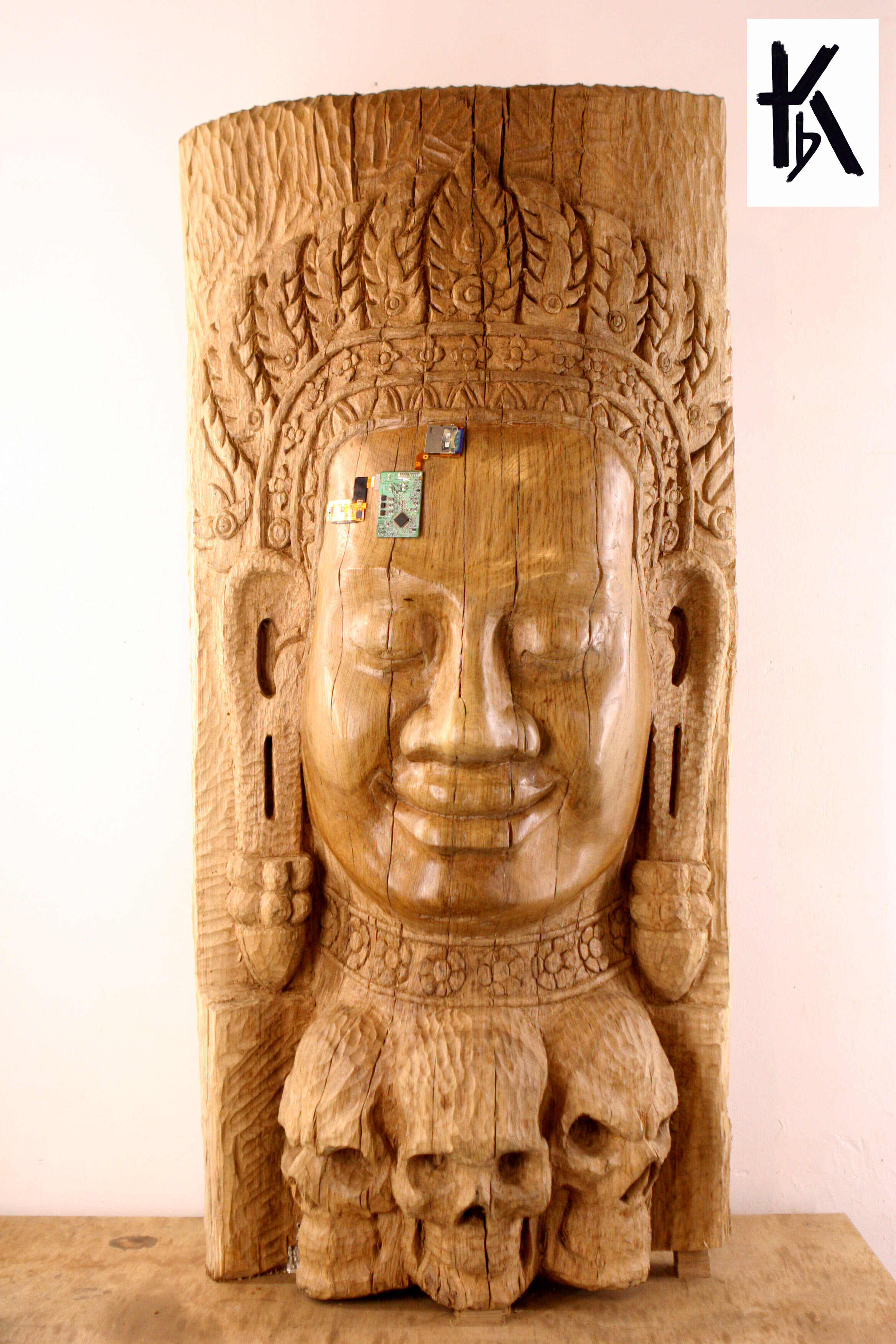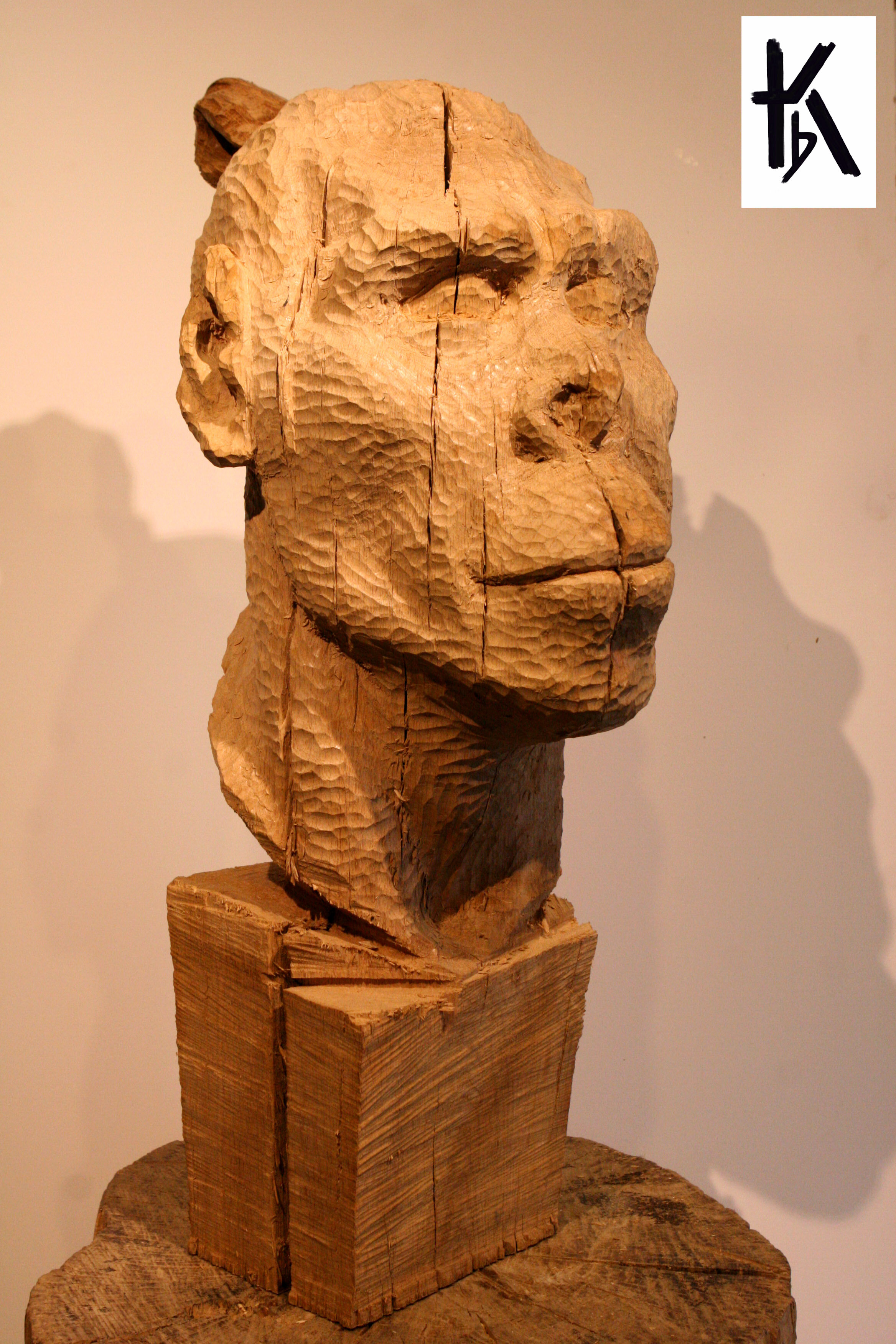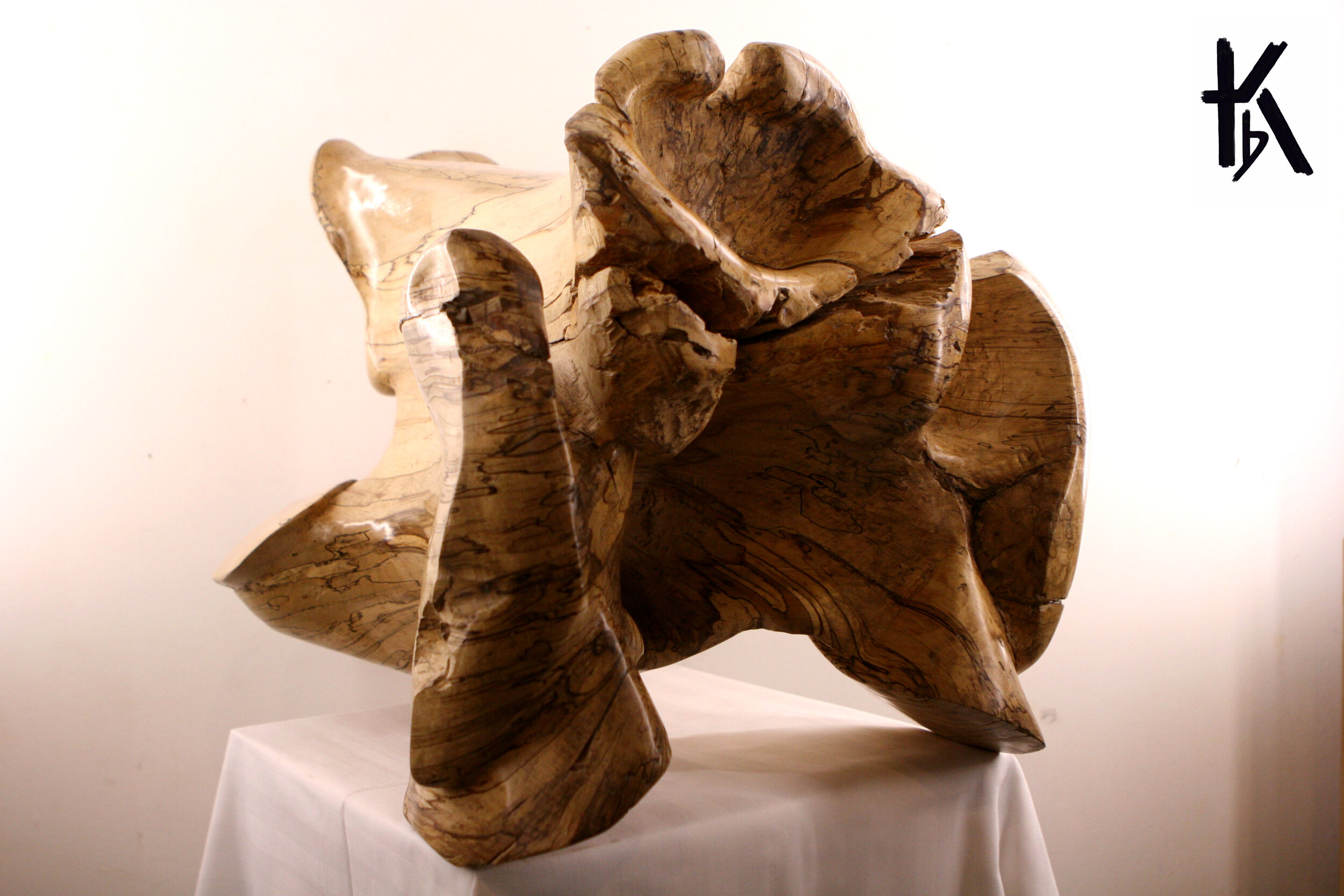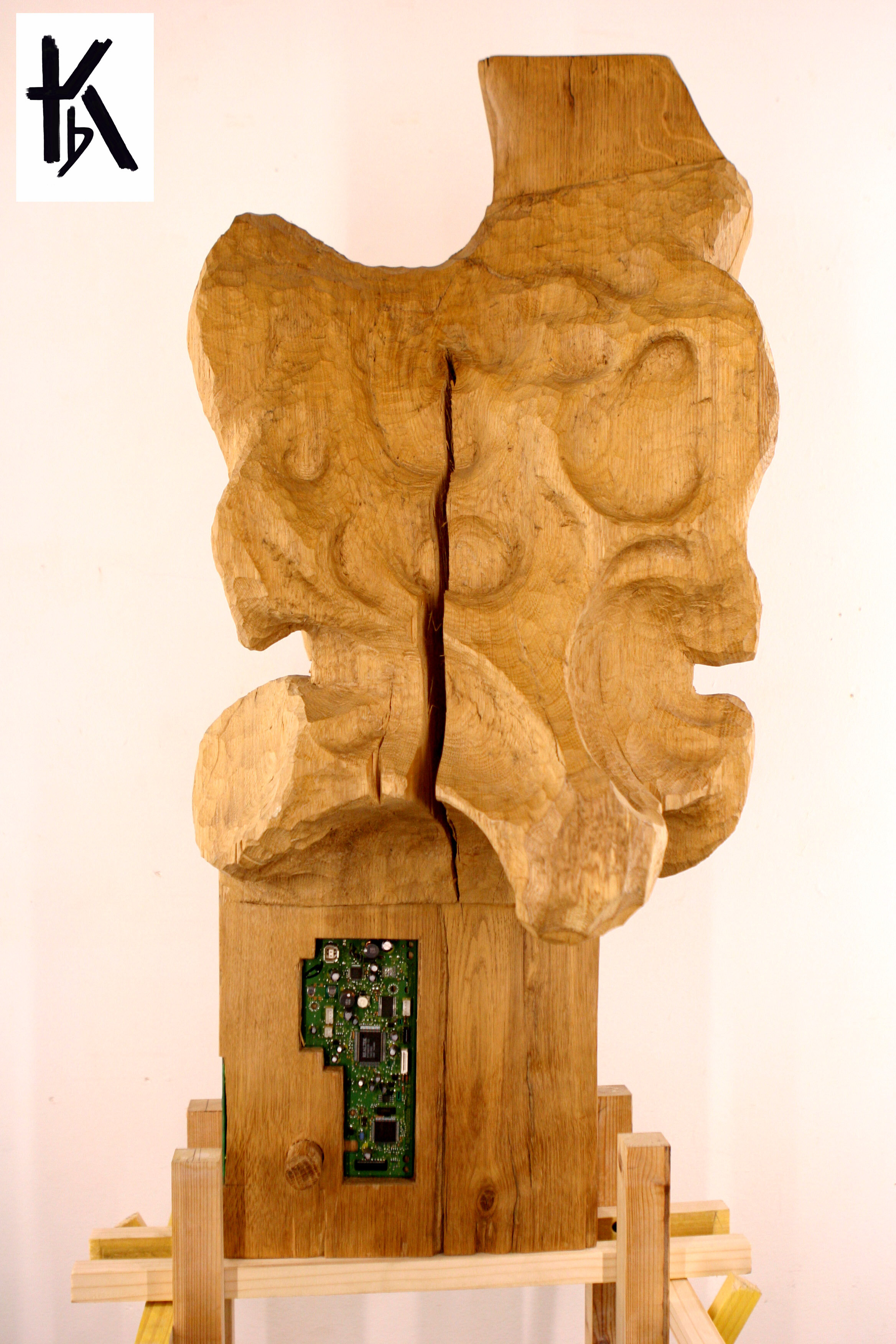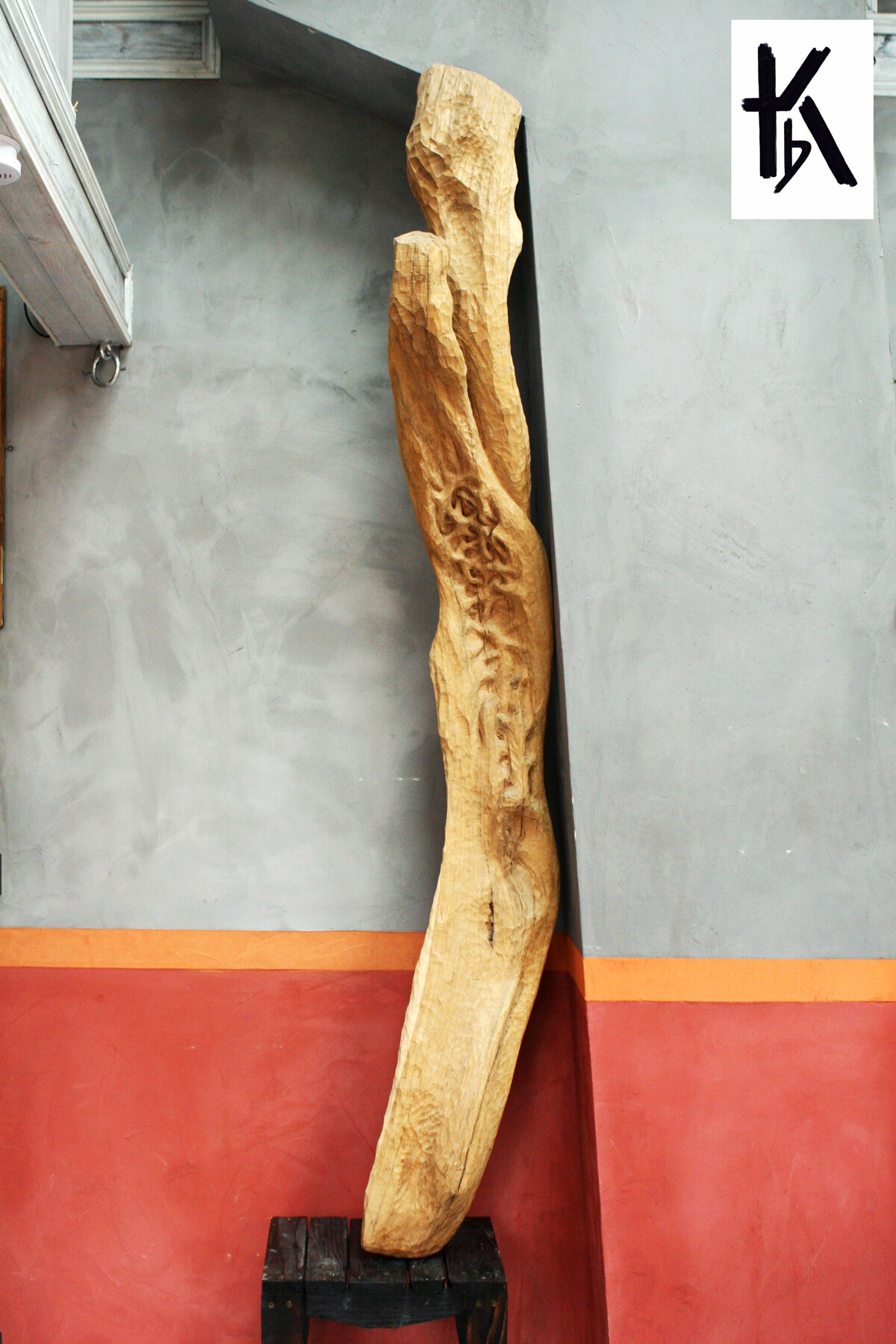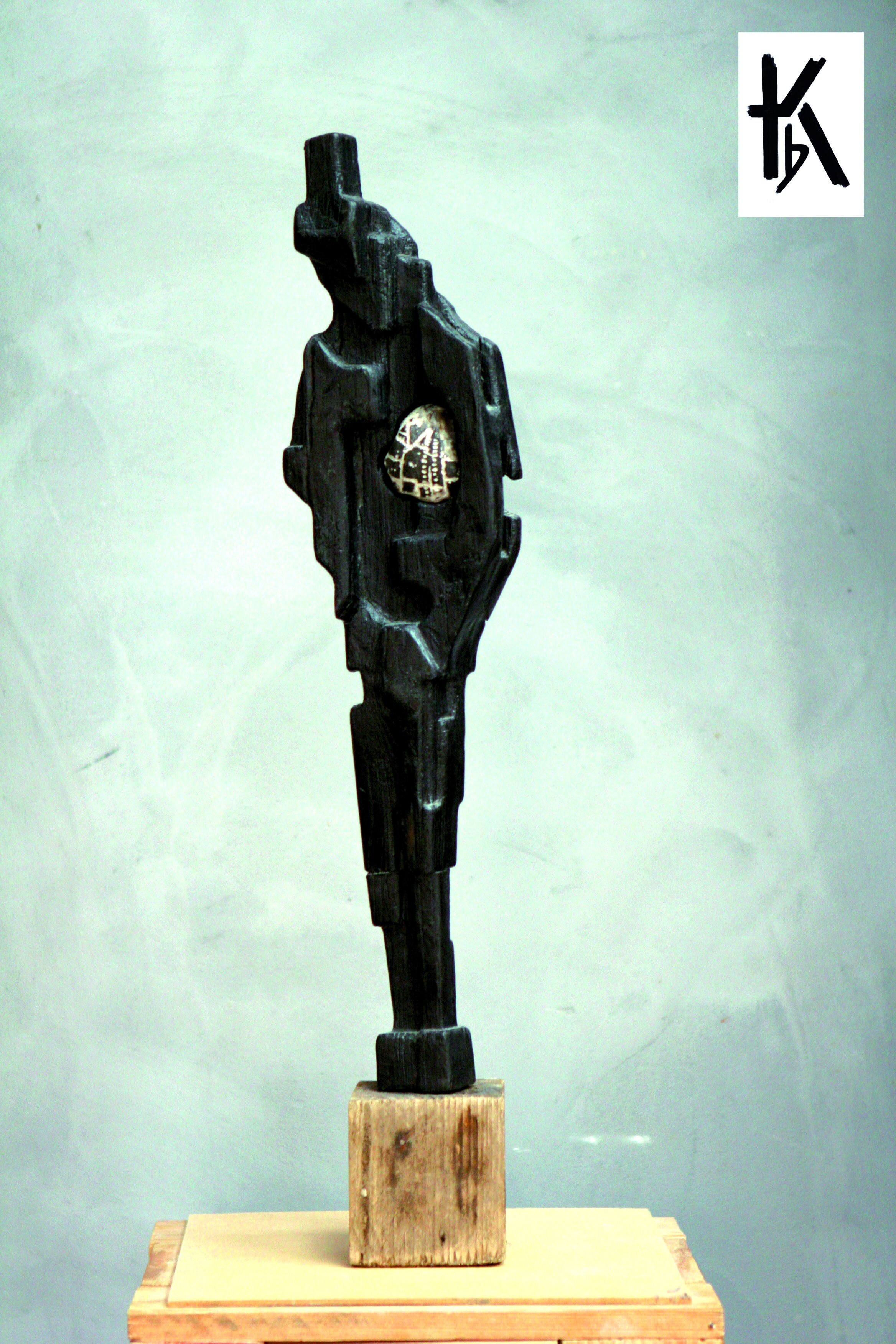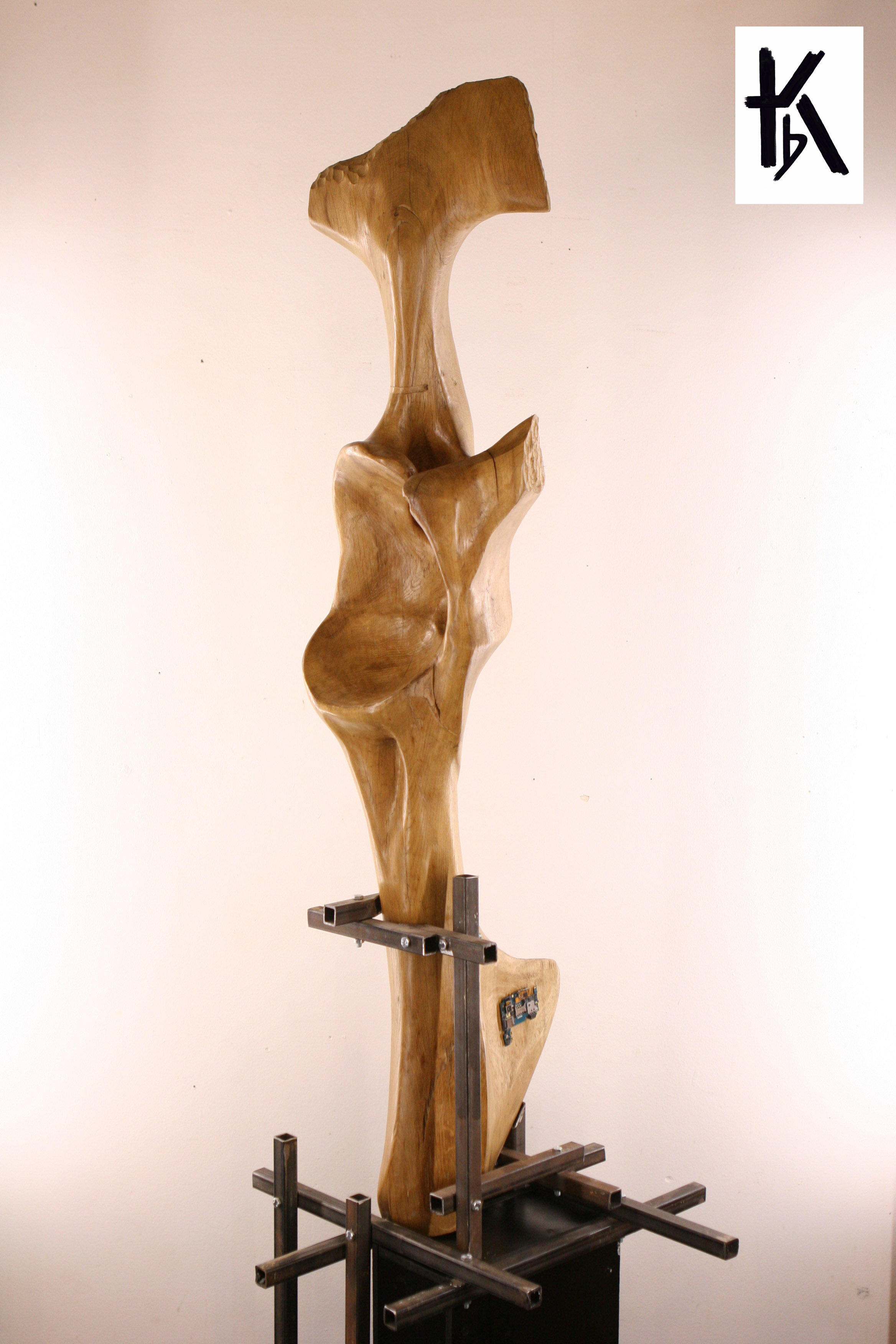Kim bo is a French artist born in Cambodia in 1974. He arrived in Paris in 1982 where he now lives and works. Feeling the need to confront himself with physicality, he turns to craftsmanship after an experience in financial auditing. This change is the occasion of his first contact with materials and led him to start sculpting in 2012. He took courses at the fine arts workshops of the municipality of Paris. The Academy of Fine Arts then offered him a residency at the Cité internationale des arts. This two-year stay, through his collaborations and exchanges with artists from other disciplines and cultures, as well as time dedicated to his practice, allows him to become aware of and develop his odyssey towards individuation. For him, individuation is a singular embodiment of the vital energy that he learns to feel. Plastic and personal research intertwine and nourish each other. The exploration of forms and materials and the study of the identity construction revealed by the plunge into trauma respond as if in an echo through the mechanism of agentivity.
Kim bo began his apprenticeship as a sculptor by modelling from a live model. Human morphology reveals to him the magic of volumes and their relationship with the mystery of the world of emotions. He begins to grasp the poses of the models as harmonious arrangements of shapes that light reveals. As time goes by, he glimpses clay modelling under other possibilities than naturalistic figuration. In fact, an archetypal relationship with the clay and the ancestral memory that inhabits it, as well as the study of forms for themselves, emerges. The plasticity of the clay opens up a vast field of experimentation. Through this approach, a sensibility that has been dormant for a long time is gradually reanimated. Fascinated by wood as a material, the artist explores direct carving after this first approach. For him, the fundamental difference between the two media lies in the permanence of the result of each intervention of the artist. With clay, he can remove and add the material as he pleases, whereas wood obstinately retains all traces of his intervention in its anatomy. Therefore, the artist is left to adjust his steps to the unexpected reactions of the material under his fingers, just as much as the wood has to comply with each strikes of the artist’s chisel strokes.
As the two engage in an unpredictable dance, each one takes off, layer after layer, their skins hardened by the tumults of life trying to reach the depths of their essence.
The process of direct carving is an opportunity for the artist to embark on a journey during which he learns to reconcile himself with his identity after having lived, at a young age, a traumatic experience of exile from his country of origin and acculturation. His strong will to survive in a foreign environment has led him to build a kind of mental "scaffolding", or protective barrier, like organisms using an exoskeleton to protect their bodies. This motif often appears in his works in the form of sharp structural supports that are strongly juxtaposed with sculptures representing essential elements of the human body. The study of optimality as a graphic signature of the living through the bones and the evolution of human morphology reinforces his intuition of individuation.
The notion of uncovering what lies beneath is unequivocally present in many of the artist's works. He attempts to dissect the human mind by autopsying it stratum by state, questioning the innate or acquired part of the psyche and its interaction with the environment. Individuation is the corollary of his research on materials and the self. It is the result of the discovery of the beauty of form and technique as well as her efforts to master fears and trauma through the act of creation.
THE CREATIVE PROCESS
As you look to the future and the kind of world we are leaving the next generation, what is the importance of creativity and the arts?
NASA KIM BO
Facing rapid changes at a very young age, I first adapted by adopting the conditions of my new environment. Art and the creative process allowed me to return to a deeper identity than the one I had built for myself to survive. In doing so, I was able to discover the energy that inhabited me beyond the vicissitudes of life.
It is through the plastic arts that I discover and deepen the creativity that for me embraces existence more broadly. This is a powerful attitude to deal with the complexity of things in their nuances. In multi-cultural and ever-changing societies, creativity and art allow us to move towards a individuation that is precious for relationships.
I am eager to pursue this research which creates opportunities for exchange with my environment. Doing so through sculpture processes, forms and collaborations i'll be given to experiment.




